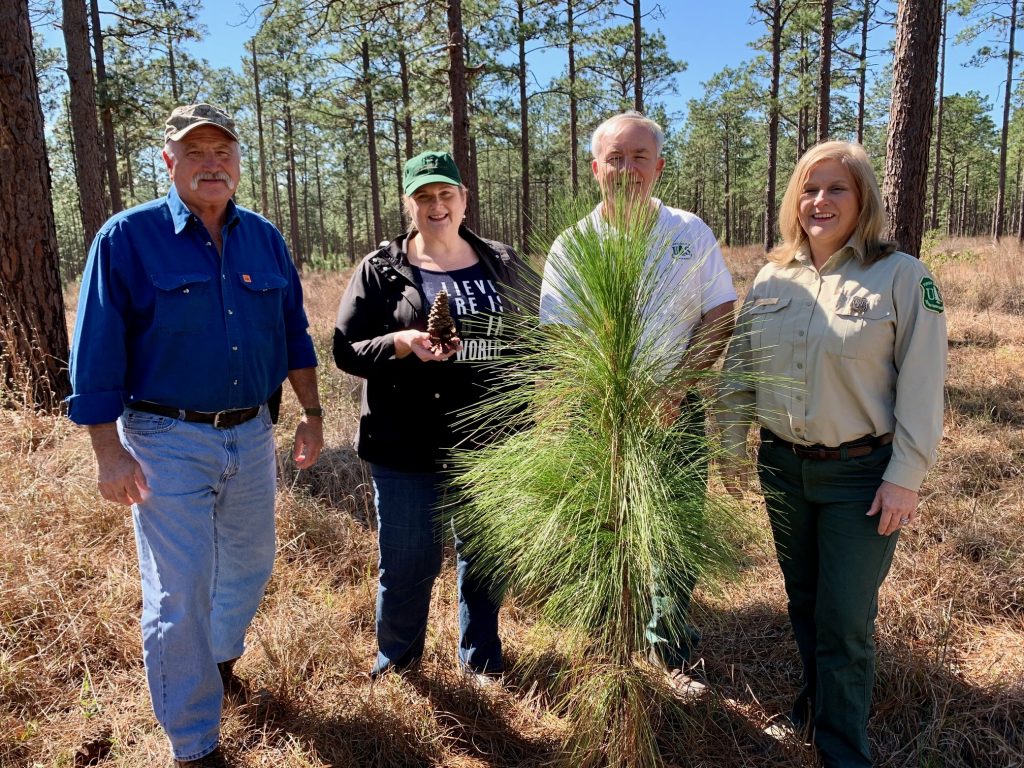By Rebecca Triche, LWF Executive Director
 In March 2020, just before the COVID-19 quarantine started, we visited Kisatchie National Forest to see the aftermath of forest damage due to a tornado that hit central Louisiana on December 16, 2019. Barney Callahan, LWF board member, and I toured areas hard hit by the tornado with US Forest Service’s Lisa Lewis, forest supervisor; Jonny Fryar, district ranger; and Jim Caldwell, public affairs officer. We talked about how important it was to move the downed timber quickly to market to reap any funding that could be used for replanting and recovery efforts.
In March 2020, just before the COVID-19 quarantine started, we visited Kisatchie National Forest to see the aftermath of forest damage due to a tornado that hit central Louisiana on December 16, 2019. Barney Callahan, LWF board member, and I toured areas hard hit by the tornado with US Forest Service’s Lisa Lewis, forest supervisor; Jonny Fryar, district ranger; and Jim Caldwell, public affairs officer. We talked about how important it was to move the downed timber quickly to market to reap any funding that could be used for replanting and recovery efforts.
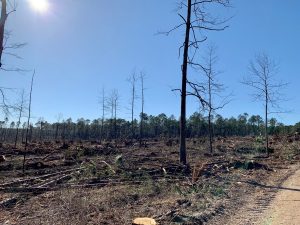
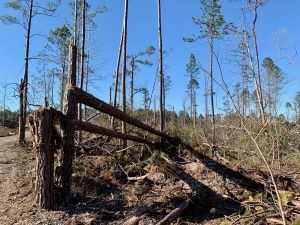
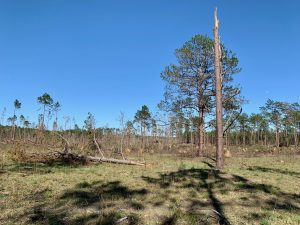

 We toured some of the US Forest Service’s ongoing work to restore Longleaf Pine ecosystems that were once more prominent in Louisiana and throughout the southeastern states.
We toured some of the US Forest Service’s ongoing work to restore Longleaf Pine ecosystems that were once more prominent in Louisiana and throughout the southeastern states.
Longleaf pine is one of the most diverse ecosystems in the world. It’s my favorite forest habitat. I wish photos from that day captured how the grasses in the restored longleaf pine savanna glowed in the sunlight. Some of the trees seemed to sparkle. Go see it for yourself to experience what native people and early settlers must have seen for thousands of acres and imagine buffalo roaming the area, too.
Declines in wildlife are directly related to declines in habitat. The endangered red-cockaded woodpecker is dependent on pine forests at least 60 years old but prefer 80 to 100 year-old pines infected with red heart fungus. The current species recovery strategy includes adding nesting boxes to older longleaf pine trees to give these woodpeckers nesting and roosting cavities they prefer. Improving and increasing Longleaf Pine habitat is essential for their long-term recovery. The population of red-cockaded woodpeckers is increasing thanks to work by US Forest Service, Louisiana Department of Wildlife and Fisheries, and other partners.
Check out the video of a longleaf pine with a nesting cavity for red-cockaded woodpeckers: Video Kistachie pine nest cavity
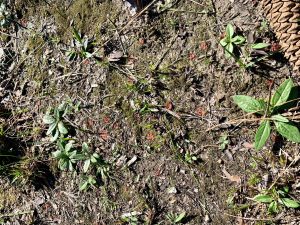
At the time of the tour, we could not have known that Hurricane Laura would speed through southwest Louisiana on August 27, 2020 and leave more forest damage than has been seen in the history of Kisatchie National Forest management. Hurricane Delta in October 2020 and then a hard freeze in February 2021 heaped on more damage. Mother nature is resilient and can spring back because we know our state has experienced many storms and acts of nature through millennia. Proper management to lessen negative modern human impacts is important to assist in natural recovery.
Learn more about how Kisatchie National Forest is fairing today by listening to my interview with US Forest service rangers on Conserving Earth, a new show on Red River Radio. It will air on their main channel November 17 at 6pm. To view a rebroadast go to: https://www.redriverradio.org.

Want to connect with Kisatchie National Forest from your phone or desktop? There’s a live feed on an eagle nest at Kincaid Lake.

